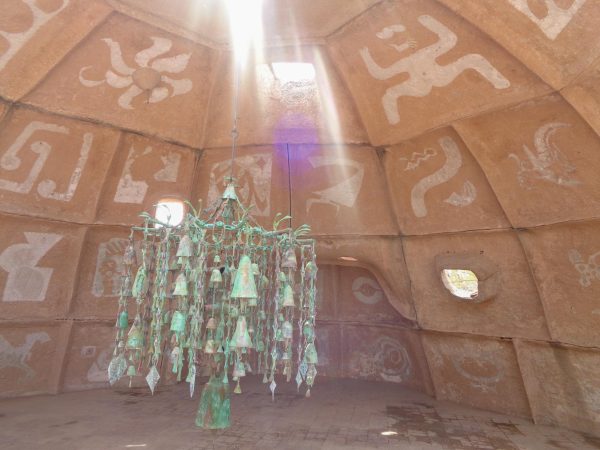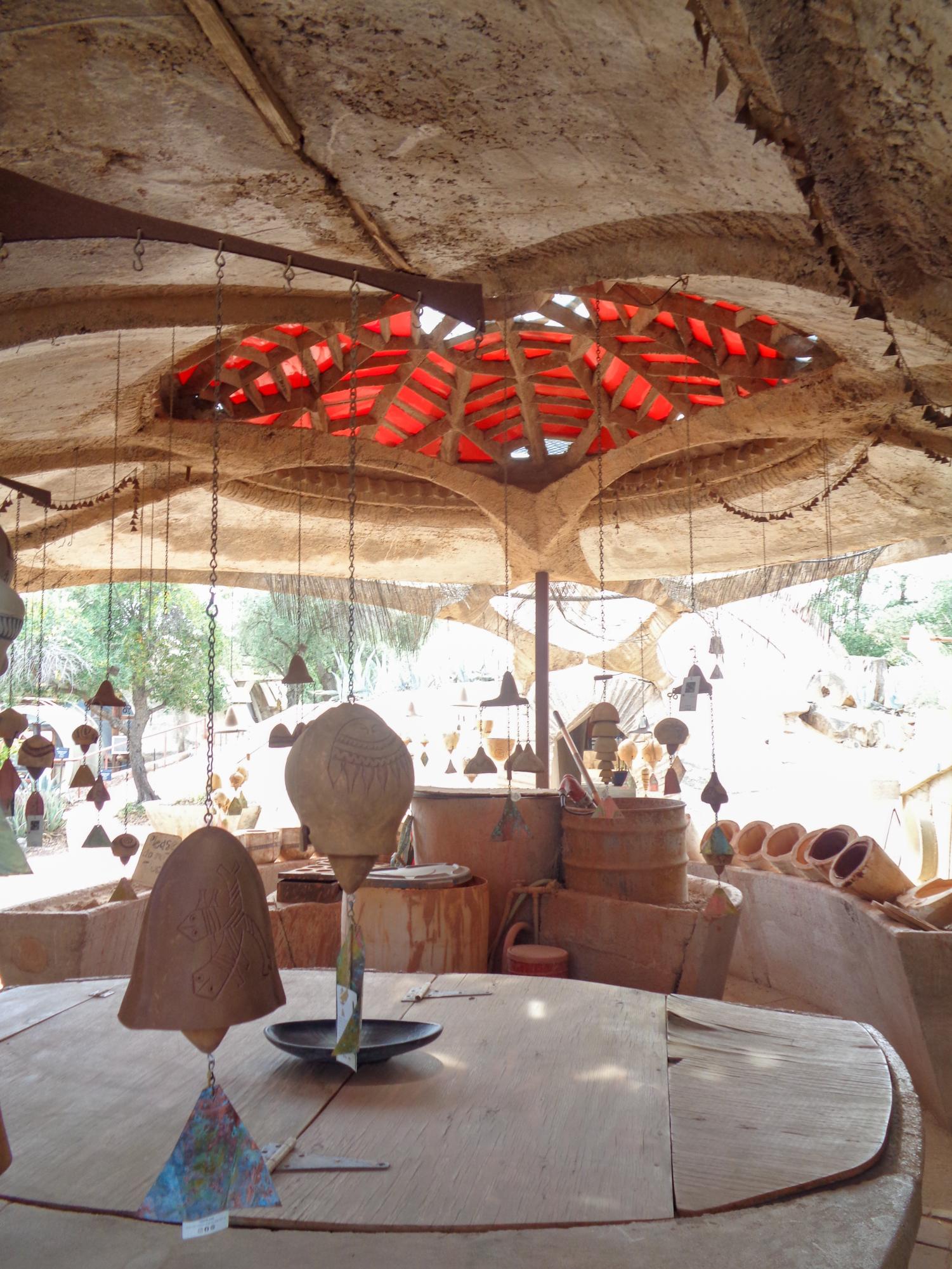Over spring break, I had the opportunity to visit a historic architectural site just north of Phoenix. While I went in assuming this was an art museum, I quickly saw that it was a larger conglomeration—something immersive and difficult to define. The site was home to large concrete domes known as “apses,” an art gallery, a windbell casting studio, and a residential space. Entering felt like slipping into a different world: an archaeological oasis shaped by the surrounding desert.

The idea for Cosanti began with a man named Paolo Soleri, who had grown discontented with modern architecture. While working at a ceramics factory in Italy, he took issue with the cold, industrial look of modern structures and the way they seemed to divide the relationship between man and the natural world. He also condemned the way artists valued the individual fame of their work over serving the common good (Cosanti Foundation).
Inspired to pioneer a new approach to ceramics, Soleri relocated to Arizona and began experimenting with a different kind of architecture. He employed a method called earth-casting, where he shaped the ground using sand and dirt and then dug out the earth beneath (Cosanti Foundation). The result was a sculptural dome that echoed the shape and flow of the desert landscape.
Construction of Cosanti began in the 1950s and evolved over the decades. It was built largely by hand, with the help of students and volunteers who were drawn to Soleri’s vision. The structures were added gradually and often with no formal plan, resulting in an organic layout that grew naturally.
What most stood out to me during my visit was how vibrant it felt. The site was full of colorful mosaics, interesting textures, and greenery. Desert light filtered through the arches, bringing the structures to life. It was peaceful while flowing with creativity. The wind bells hung in clusters and chimed in the breeze, voicing Soleri’s nature-oriented ambition.
Cosanti is not a stagnant monument, rather a living example of architecture harmonizing with nature. Decades of love and care have shaped the site, fostering not only an appreciation for Cosanti itself and the stunning desert that surrounds it, but—more importantly—for the delicate balance and mutual enhancement between the two.



